There’s a common line when someone is advertising their culture. The template is something like, “we do this, we’re good at this, and oh, we REALLY love food!” It has always struck me as a little bold for a cultural representative to claim ownership over loving food. Doesn’t everyone love food? My three-week visit to Pakistan has softened my view. Pakistanis love food. REALLY. And now I know why: they contend for the best cuisine on the planet. I’m not just saying that because my in-laws will read this.
Meals are long and frequent, with multiple heavy snacks supplementing the 3 meal diet I’m accustomed to. They’re always family style. No such thing as “I’ll have the ribs” – you might as well go eat at a different table. Even a sandwich will be cut into sevenths if that’s what it takes for everybody to have a taste. You should order enough food so that the waiters and entire kitchen staff could join you (it is easier to give away remaining food to the homeless here as many restaurants allow people to sit right down at your table as you’re getting up so that they can finish your food while it’s still warm and fresh).

Abundance is key. Plate after plate of stews, barbecued meat, chickpea and potato dishes, each with its own ensemble of spices to beat up your tongue. At a table of eight there will be fourteen plates of food, three glasses of water, and four 1-ply tissues for cleanup. If the spice is overwhelming, there’s usually a yogurty chutney nearby to cool down your mouth. Although sometimes, without warning, this chutney contains peppers 10 times hotter than jalapeños (this isn’t just an expression, I looked it up on the Scoville scale). RIP taste buds.
The food isn’t all spicy, but it’s all intense. Deep umami meat, dripping savory butter, saturated sweet syrups, they‘re not half-assing here. Intensity and subtlety are often thought to be at odds with each other. Flamin’ Hot Cheetos are potent but single-note. Pakistani food marries the two ends of this spectrum and here’s how it works: take a wonderfully subtle dish and then amplify each individual flavor by 20x. Voila! You’ve preserved all of the harmonies while making Western cuisine taste like Wonder Bread by comparison.

What’s Pakistani food like? It’s similar to Indian food but there are some notable differences: Pakistani food is not as big on curry, it’s much more meat-heavy, it’s spicier, and it’s objectively better (they’ve made a loyalist out of me). I got a lot of credit for being able to handle the peppers and for not shying away from the more exotic offerings like goat brain and bone marrow stew. My personal favorites:
- Nihari: The national dish of Pakistan. A mutton (adult lamb) stew sloooow cooked to extract maximum meat flavor. Crisp green peppers that threaten to be too spicy but are always just right.
- Aloo chole: soft potato and chickpeas with a tangy pickled chutney and… spices. Eaten for breakfast with a greasy crispy fried bread called puri.
- Jalebi: knotted dough fried in ghee (basically uber-butter) and then soaked in sugary syrup. Served hot and crispy. The syrup bursts in your mouth like Gushers.

Food is eaten with the hands. Rip off a piece of naan (or one of several other breads that I actually prefer) and use it to pick up your next bite. I assure you, you eat twice as much when the utensils are edible. There’s a constant rotation of hot bread coming to the table. When new provisions arrive, a foghorn sounds from the head of the table’s mouth and everybody abandons the lukewarm piece they’re holding in favor of a steaming slice that could burn their fingerprints off. The remaining graveyard of cold naan shards is almost a point of pride that we didn’t take a single suboptimal nibble.
The Wikipedia page for Pakistani cuisine says that Pakistanis eat with their hands “because the food tastes better that way.”* I told my Pakistani travel companions this and was met with blank stares waiting for a punchline.
Me: “It’s funny to state that like it’s some scientific, encyclopedic fact.”
Them: “… it does taste better this way.”
Eating is a very carnal thing and Pakistanis embrace that. You’re often sitting on the floor, knuckle-deep in a communal plate of rice. Yellow fingernails, piles of grease-soaked napkins, nose blowing and sweating from the spice – the only table behavior that’s considered rude is refusing thirds. For someone who grew up with salad forks and “no elbows on the table”, this gustatory gusto might take some getting used to. But once you let go of your inhibitions, it’s quite a fun experience and the food really does taste better that way.
Amazingly, the most important part of Pakistani cuisine isn’t the food: it’s chai. Not to be confused with American “chai tea”, “chai” is simply the word for tea in Urdu. Knowing that this is a religious society, an ignorant observer could reasonably conclude that the people worship chai. To wake up in the morning, to cap off the day, to digest after lunch, to while away a free hour, it’s always a good time to sip. It doesn’t matter if only one person wants it and we’re a half hour late to our next destination, everybody respects your right to chai. It’s typically loose-leaf black tea, piping hot whole milk, and sugared to taste with coarse crystals and a side biscuit. When loose-leaf isn’t available, people are equally giddy for a Lipton bag, which amuses me – like cheesemongers going bonkers for Kraft Singles.

Chai is not drunk with food but it fills much of the negative space around eating, because god forbid the hand-to-mouth muscles atrophy between meals. Like most addictions, the ritual of it all is half the pleasure and although I quit caffeine before our travels, I over-indulged in chai to do as the Pakistanis do. My jittery heart has no regrets.
More photos of great food are below (FYI, they’re not visible in the email digest).
*I swear this was real but it has since been edited away, no doubt by a fun-sucking Westerner.


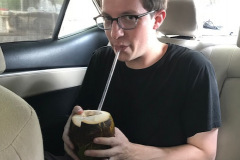
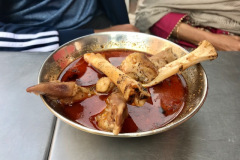
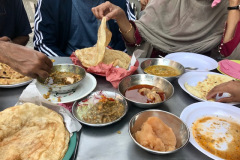
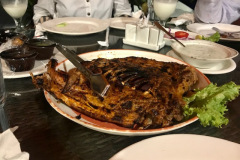
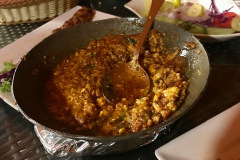
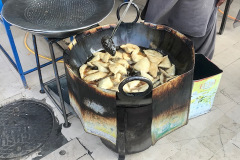
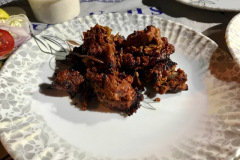
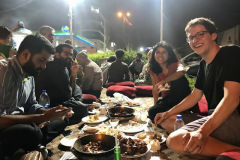
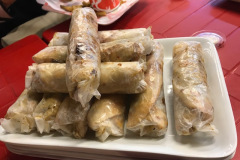
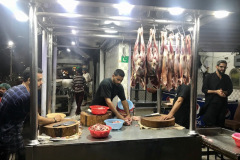
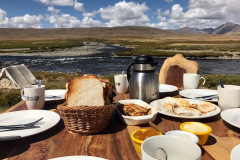
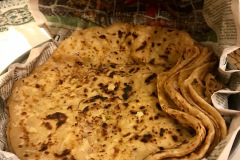
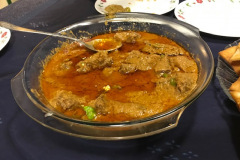
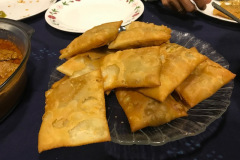
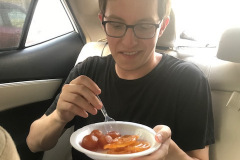

Awesome guest post! Now I’m hungry haha.
Jack is ALWAYS sharing his naan. “….everybody abandons the lukewarm piece they’re holding in favor of a steaming slice that could burn their fingerprints off. The remaining graveyard of cold naan shards is almost a point of pride that we didn’t take a single suboptimal nibble.”
Love the title and blank stares bit. Keep guest posting.